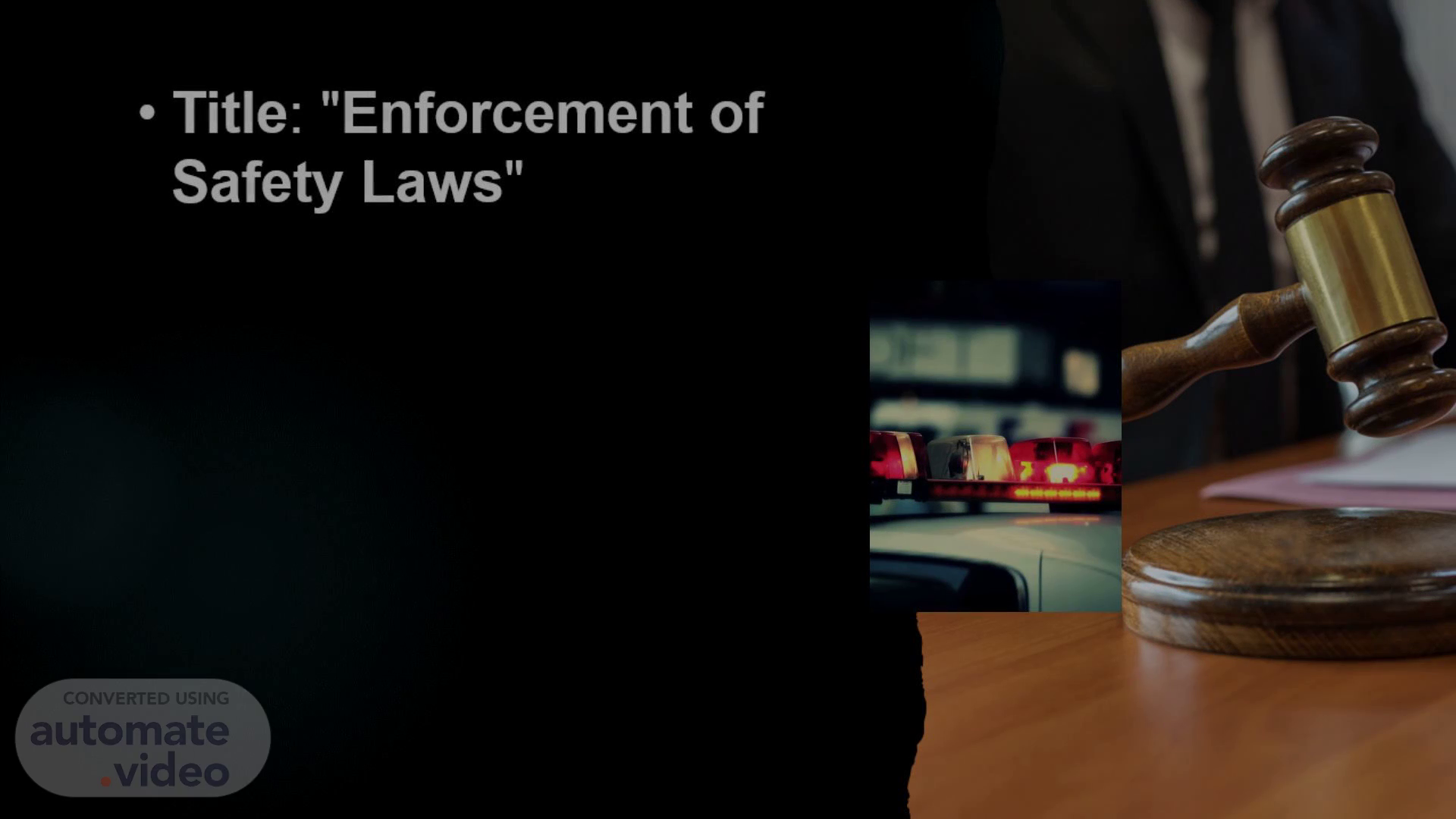
Page 1 (0s)
[Audio] Enforcement of safety laws. [image] Hand with a gavel.
Page 2 (8s)
[Audio] Introduction to Safety Laws Definition of safety laws: Safety laws are regulations designed to ensure the well-being and protection of individuals, communities, and the environment by setting standards for various activities and industries Importance of safety regulations: Safety laws are crucial for preventing accidents, injuries, and hazards, promoting public health, and maintaining a secure and orderly society Brief overview of the entities involved: Various government agencies at the national, state, and local levels play key roles in enforcing safety laws.
Page 3 (49s)
[Audio] Overview of Safety Law Authorities Government agencies responsible for safety laws enforcement National level: Federal agencies such as OSHA, NHTSA, EPA , etc State level: State police, Department of Transportation, and other relevant state agencies Local level: Local police departments, fire departments, and municipal regulatory bodies.
Page 4 (1m 23s)
[Audio] Federal Authorities Explanation of federal agencies involved in safety law enforcement OSHA : Ensures safe and healthy working conditions NHTSA : Focuses on road safety and vehicle regulations EPA : Addresses environmental safety and pollution control Their jurisdiction and specific focus areas: Federal agencies typically have jurisdiction over national and interstate matters, setting standards and regulations that impact a broad range of industries and activities.
Page 5 (2m 3s)
[Audio] State and Local Authorities Explanation of state and local agencies involved in safety law enforcement State Police: Enforce traffic laws, respond to emergencies, and uphold state regulations Department of Transportation: Focus on road safety, transportation regulations, and infrastructure maintenance Local Police: Enforce safety laws within local jurisdictions How state and local laws complement federal regulations: State and local authorities often tailor regulations to address specific regional needs while aligning with overarching federal guidelines.
Page 6 (2m 50s)
[Audio] Collaboration and Jurisdiction Emphasize the collaboration between different agencies: Effective enforcement requires collaboration, information sharing, and joint efforts between federal, state, and local agencies Clarify jurisdictional boundaries and areas of overlap: Clear delineation of responsibilities prevents duplication of efforts and ensures comprehensive coverage The importance of communication and coordination for effective enforcement: Timely sharing of information and resources enhances the overall effectiveness of safety law enforcement.
Page 7 (3m 31s)
[Audio] Conclusion and Takeaways Highlight the diversity of agencies, the importance of safety laws, and the collaborative nature of enforcement efforts. Importance of a multi-agency approach for effective safety law enforcement: Multiple agencies working together create a more comprehensive and responsive safety enforcement system. Encouraging compliance and the role of the public: Public awareness and cooperation are essential for ensuring compliance with safety laws and creating a safer community.